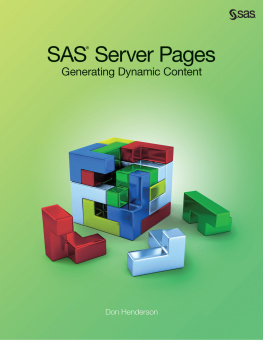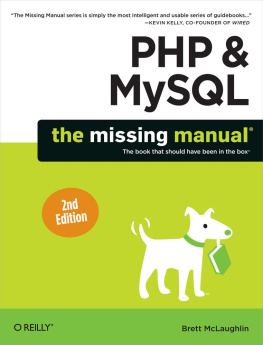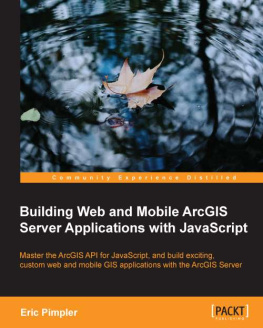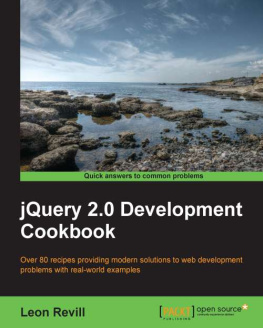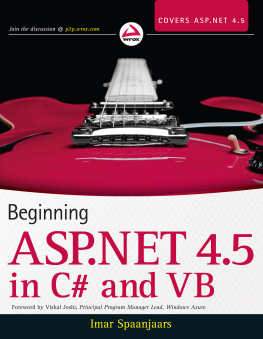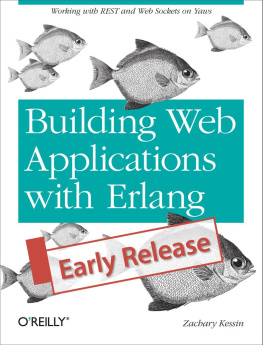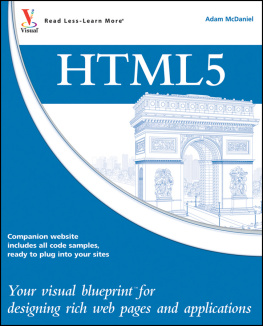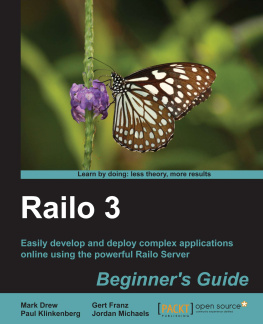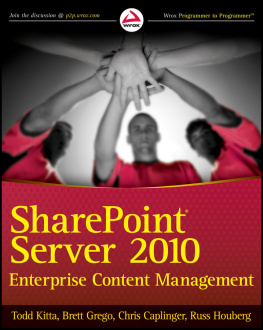Copyright
The correct bibliographic citation for this manual is as follows: Henderson, Don. 2013. SAS Server Pages: Generating Dynamic Content. Cary, NC: SAS Institute Inc.
SAS Server Pages: Generating Dynamic Content
Copyright 2013, SAS Institute Inc., Cary, NC, USA
ISBN 978-1-61290-116-9 (electronic book)
All rights reserved. Produced in the United States of America.
For a hard-copy book: No part of this publication may be reproduced, stored in a retrieval system, or transmitted, in any form or by any means, electronic, mechanical, photocopying, or otherwise, without the prior written permission of the publisher, SAS Institute Inc.
For a web download or e-book: Your use of this publication shall be governed by the terms established by the vendor at the time you acquire this publication.
The scanning, uploading, and distribution of this book via the Internet or any other means without the permission of the publisher is illegal and punishable by law. Please purchase only authorized electronic editions and do not participate in or encourage electronic piracy of copyrighted materials. Your support of others rights is appreciated.
U.S. Government Restricted Rights Notice: Use, duplication, or disclosure of this software and related documentation by the U.S. government is subject to the Agreement with SAS Institute and the restrictions set forth in FAR 52.227-19, Commercial Computer Software-Restricted Rights (June 1987).
SAS Institute Inc., SAS Campus Drive, Cary, North Carolina 27513-2414
1st electronic book, March 2013
SAS provides a complete selection of books and electronic products to help customers use SAS software to its fullest potential. For more information about our e-books, e-learning products, CDs, and hard-copy books, visit support.sas.com/bookstore or call 1-800-727-3228.
SAS and all other SAS Institute Inc. product or service names are registered trademarks or trademarks of SAS Institute Inc. in the USA and other countries. indicates USA registration.
Other brand and product names are registered trademarks or trademarks of their respective companies.
523085momccl01JUL2013
Chapter 1: Introduction
On the surface, dynamic content generation is a simple concept. Web pages can be dynamically generated at the time of access by a user, and the generated output can be customized. That customization can be defined by a number of criteria, including, for example, the results of interaction with a user, a change in the underlying data sources, and so on.
With the release of SAS/IntrNet software in 1997, the delivery of dynamically generated Web pages became a key feature of SAS software. The initial release of SAS/IntrNet software relied on the infrastructure provided by Base SAS software to generate Web content (for example, HTML pages). The Output Delivery System (ODS) is another popular way to implement dynamic content generation (such as HTML) using SAS software, and it has worked quite well for reporting applications. The DATA step with FILE/PUT statements is also widely used to generate custom HTML. These techniques are very powerful, but also somewhat limiting. ODS is simple to use, but it is limited primarily to tabular and graphical reporting. The FILE/PUT statements in the DATA step can be used to generate virtually any content, but many SAS programmers find it difficult to write, understand, and maintain these programs. This is primarily due to conflicts in how certain special characters (for example, double quotation marks, ampersands, and so on) are interpreted in SAS versus HTML.
The evolution of dynamic content generation using SAS software mirrors the evolution of the Web. It started with the idea of static HTML documents using Base SAS software and quickly evolved to dynamic content generation via SAS/IntrNet and, later, via the SAS BI tools.
SAS Server Pages grew out of a need for more extensive and flexible ways to generate HTML-based dynamic content. They were initially described in the SAS Press book Building Web Applications with SAS/IntrNet: A Guide to the Application Dispatcher . SAS Server Pages have been used by a number of SAS developers as a way of creating custom user interfaces for Web-based applications. The basic idea behind SAS Server Pages is to embed logic into the HTML files themselves. Their use is thus similar to how Active Server Pages (ASP) and Java Server Pages (JSP) are used in the development of Web applications in general.
In earlier releases of SAS, the creation of SAS Server Pages is supported by a SAS macro that leverages the infrastructure provided by the DATA step.
SAS Server Pages can be used with any SAS product but are typically used with the following software:
SAS/IntrNet Application Dispatcher software
SAS Stored Processes, which are part of SAS BI and SAS Enterprise BI software
Base SAS software
1.1 The STREAM ProcedureProcessing SAS Server Pages
The STREAM procedure is an experimental procedure in SAS 9.3. Similar to ODS and the DATA step, PROC STREAM and SAS Server Pages provide a foundation technology that greatly expands the capabilities of SAS for dynamic and rich content generation. Through the use of PROC STREAM and the Macro facility, SAS can now be used to generate any type of markup or text-based content such as HTML, XML, CSV, and so on.
PROC STREAM significantly expands what can be done with SAS Server Pages. It includes, but is not limited to, the following features:
SAS code can be defined and executed in a SAS Server Page.
SAS Server Pages can dynamically include other SAS Server Pages (analogous to what is referred to as Server Side Includes in JSP and ASP applications).
There is no longer a 32K limit on how much text a macro can generate.
The focus of this book is to illustrate how to generate SAS Server Pages using PROC STREAM. For readers who might not yet have access to SAS 9.3 and PROC STREAM, see SAS Server Pages , and specifically Generating SAS Server Pages in Different Releases of SAS , for details about how SAS Server Pages can be generated in previous releases of SAS.

